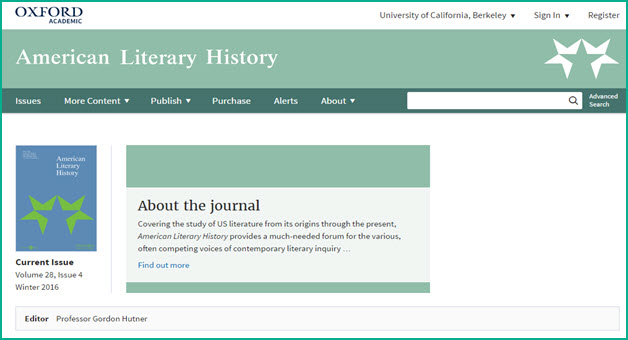Oxford Journals move to new platform, Oxford Academic
In late 2016 and early 2017, Oxford University Press (OUP) began the process of transitioning all OUP Journals to the new Oxford Academic (Silverchair) platform; OUP announced on February 1, 2017 that all journal content migration was complete. This was the first phase of this process – in addition to journals, Oxford Academic will eventually include the majority of Oxford’s digital book and online product content.
During the dual coverage period CDL identified two significant display issues which do not affect the ability to access subscribed content, but may cause user confusion. CDL is working with Oxford to resolve these issues.
1. Site branding may cycle through different wording for an individual campus.
When navigating or refreshing pages on the Oxford site, you may see the site branding text change in the upper right corner. This is a by-product of campuses having multiple administrative accounts on the Oxford platform that have different account names.

2. The access icon for subscribed content may display incorrectly as a shopping cart, even though the article is accessible.
If a user encounters an unexpected “not available” shopping cart icon when browsing subscribed content, clicking “View Article” will still provide them with access to the PDF and/or HTML. Note: This is only true for UC- licensed content. Shopping cart icons on content that UC does not subscribe to correctly indicates that it is not available.
Access to articles via UC Elinks or other direct article linking works as expected.
More information about the new platform
Despite the above issues that are currently being investigated, there are some real pluses to the Oxford Academic platform. According to the Oxford Academic FAQ [PDF], the new platform has improved features with more functionality becoming available as additional content is added to the platform. Currently, Oxford Journals benefit from new and improved features including:
- Fully responsive, device-agnostic design: consistent user experience across devices—including mobile, tablet, and desktop—and operating systems.
- More browse options: browse all site content, browse by content tags, browse by journal issues.
- Improved results list filters: filter to media, filter by subject, custom tags, filter by article type, filter by recently published, filter by availability.
- Mixed search results list showing articles, journals, media, and other content alongside one another.
- Improved MARC records and KBART lists.
- Improved accessibility: compliance with Web Content Accessibility Guidelines (levels A, AA, AAA where applicable) & Voluntary Product Accessibility Template generation (Section 508-related).
- Subscription-sensitive linking within the Oxford Academic platform.
OUP has implemented a comprehensive set of redirects which seamlessly take users from the old domain to the new and will persist for the lifetime of the platform so there should be no interruption in service.
David Michalski (UCD) is the Resource Liaison for Oxford Journals.

